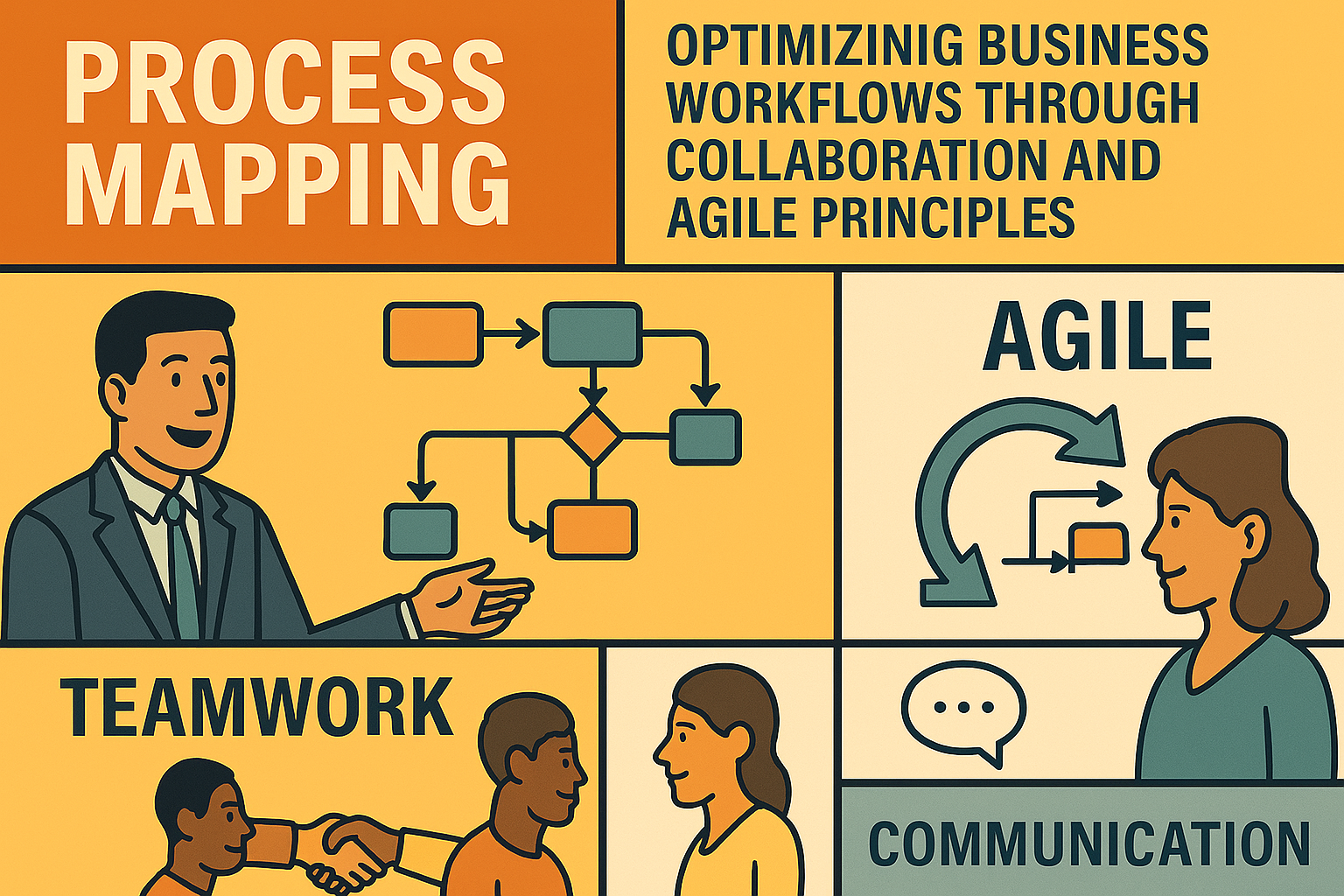
Process mapping is a fundamental skill for Business Analysts, enabling us to visualize and understand complex business workflows. It’s not just about drawing diagrams; it’s about fostering collaboration, ensuring clear communication, and establishing a roadmap for improvement. This post explores the importance of process mapping, introduces key methodologies, and highlights how Agile principles can enhance its effectiveness.
Process Mapping: A Visual Language for Business
Process maps visually represent business processes, clearly and concisely communicating how work gets done. They are invaluable for:
- Understanding Current State: Gaining a comprehensive view of existing workflows, identifying key stakeholders, and recognizing potential bottlenecks.
- Analyzing Inefficiencies: Pinpointing areas where processes are slow, redundant, or prone to errors.
- Designing Future State: Collaboratively developing improved processes that are more efficient, effective, and aligned with business objectives.
- Communication: Facilitating clear communication among stakeholders by providing a common visual language for discussing processes.
Process Mapping Methodologies: Tools for Clarity
Several methodologies can be used for process mapping, each with its strengths:
- Business Process Model and Notation (BPMN): A standardized graphical notation for representing business processes in a workflow. It’s widely used for its clarity and expressiveness.
- Unified Modeling Language (UML) Activity Diagrams: Useful for visualizing workflows, decision points, and parallel activities, particularly in software development and system design.
- Flowcharts: Simple and versatile diagrams representing various processes, from customer service to manufacturing.
Teamwork, Communication, and Agile: The Keys to Effective Process Optimization
Process mapping is not a solitary endeavor; it thrives on collaboration and effective communication.
- Teamwork: Involving stakeholders from different departments and roles in the process mapping process ensures that all perspectives are considered, leading to more comprehensive and practical solutions.
- Communication: Clear and concise communication is essential throughout the process mapping lifecycle. This includes:
- Active listening: Understanding stakeholder needs and concerns.
- Visual communication: Effectively conveying process flows using diagrams.
- Facilitation: Guiding discussions and ensuring that everyone is heard.
Agile for Process Improvement: A Fluid and Adaptable Approach
Agile methodologies, particularly Scrum, offer a robust framework for implementing process improvements.
- Iterative Approach: Agile emphasizes iterative development, allowing continuous improvement and adaptation of feedback-based processes.
- Clear Objectives: Agile methodologies require clear sprint goals and deliverables, ensuring that process improvement efforts are focused and aligned with business objectives.
- Fluidity: Agile promotes adaptability and responsiveness to change, which is crucial in dynamic business environments.
- Scrum for Process Implementation: Scrum provides a structured framework for managing process improvement projects, with roles, events, and artifacts that facilitate teamwork, communication, and progress tracking.
The art of process mapping lies in its ability to facilitate teamwork, communication, and a clear understanding of business workflows.
By embracing Agile principles and methodologies, we can create a fluid and adaptable approach to process optimization, ensuring that improvements are delivered effectively and aligned with the organization’s evolving needs.